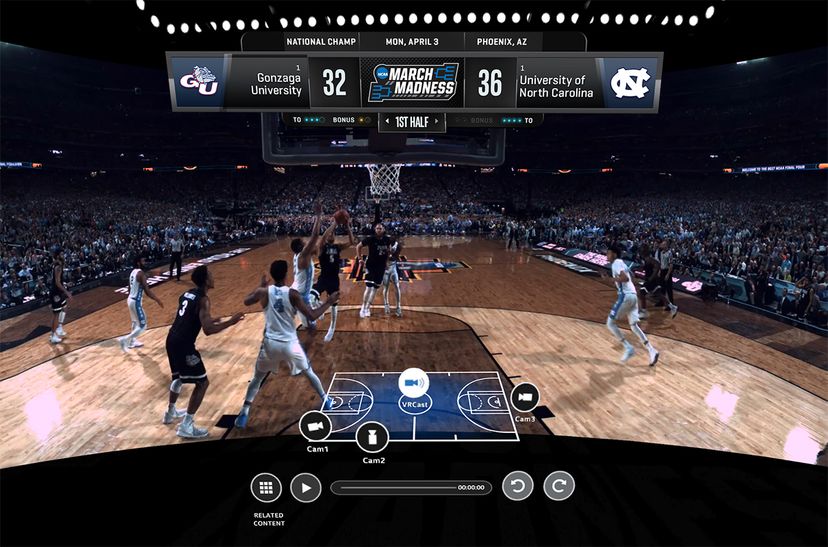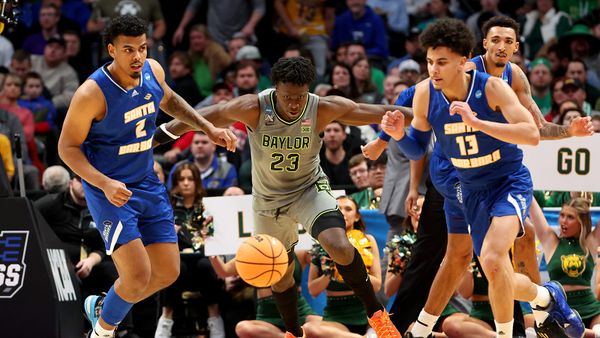
If you're a fan of college basketball, you have a few ways to stay on top of March Madness, that weeks-long series of heart palpitations and bawled-over brackets otherwise known as the NCAA Division I Basketball Tournament.
The first stop is always television, of course. For the past eight years, we've been able to watch every single tournament game live on TV, thanks to the people at CBS and Turner Sports, who are shelling out more than $1 billion a year for the right to pummel us with endless commercials and Charles Barkley bromides.
Advertisement
There's the internet. (There's always the internet.) And radio. And those newspaper thingies.
But for those on the cutting edge, the early adopters, there's also this:
Virtual reality. It's real. Right now. Albeit in its own, sometimes still-clunky way.
Turner, CBS and the NCAA have teamed up again with Intel True VR to give a bunch of tournament games the VR treatment. It takes a little hardware, and an app. But it's not that difficult to do.
- You'll need a VR headset — because that's how VR works — either a Samsung Gear VR or a Google Daydream View.
- You'll need a smartphone to stick in those headsets (a high-end Samsung phone, of course, in the Gear, or one of the dozen or so high-end phones that run in the Daydream).
- You'll need the NCAA March Madness Live VR app, which you can download (free!) in the Oculus Store (for the Gear) and the Google Play store (for the Daydream).
And, oh, yeah. You'll need money, too. The app is free to download, but games are $2.99 each, or $19.99 for the rest of the VR tournament. That includes Sweet 16, Elite 8, Final Four and National Championship.
Last year's VR technology used seven Intel pods containing 12 cameras each. The camera pods were placed under both baskets, pointed across each free throw line and along the sidelines; one higher pod covered the entire court. The result of all that technology gave VR viewers an immersive — if not exactly 360-degree — March Madness experience. Users could even choose their viewpoint from various angles (mid-court, under the basket, etc.) with their headset's controller. This year's VR experience is likely to be similar, if not better.
If you haven't used VR, it works like this: After you make sure you're connected to the internet, get the app working right, strap the bulky headset to the front of your face and pick your game, you wait for tipoff, select an angle and move your head. It's that simple.
You want to follow the players, you move your head. You want to check out the loudmouth in the second row, you stare at him or her. During a timeout, you want to watch the coach or the cheerleaders ... your choice. You want to change your viewpoint — in effect, switching VR seats — you click your controller.
You want to look at your watch? Not so easy. Your arm's not there. Again, that's how VR works.
The VR games are fully produced just for this — they're not jacked-up versions of what's on TV — and are complete with arena sounds and commentary from announcers dedicated to the VR broadcast, including Spero Dedes, Steve Smith, Rich Waltz and Steve Lavin. The games include highlights (in 2-D and VR) and recaps, too, plus behind-the-scene access, and coach and player interviews.
The end result of this still-fledgling technology may or may not be the future of sports broadcasting. With billions being spent and billions to be made, though, Turner and CBS aim to find out.
Advertisement
